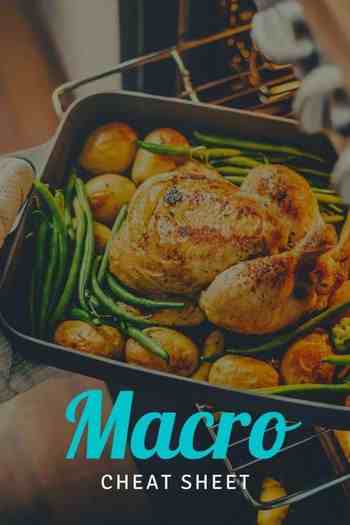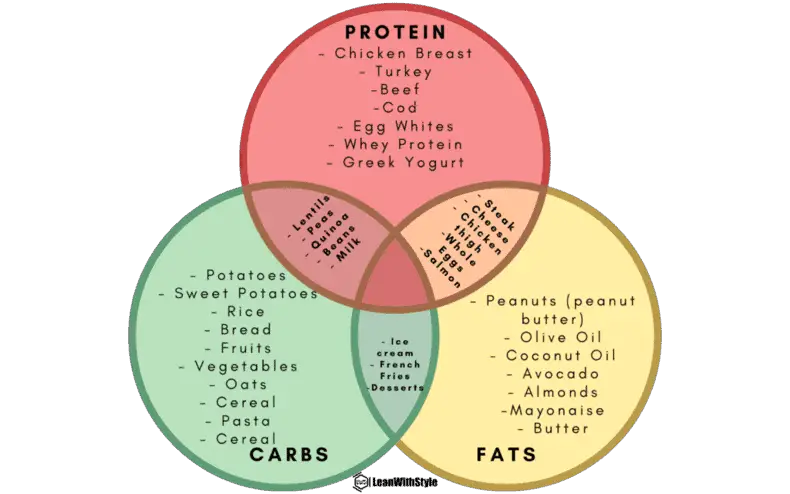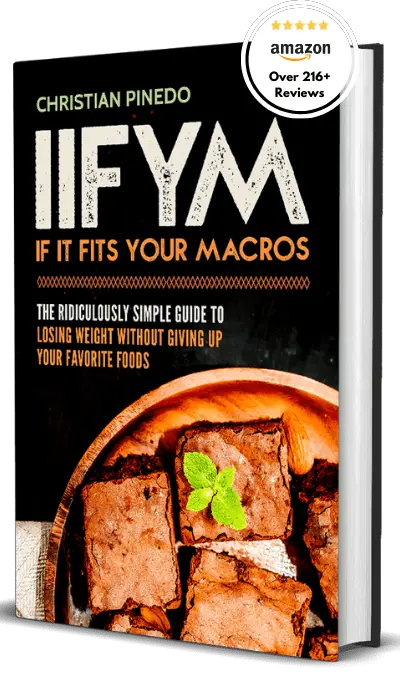“Just tell me what I need to eat.” That’s what this macro cheat sheet will do for you.
If you are new to the world of fitness and nutrition but have found IIFYM early on, you are already light years ahead of your peers, who are trying to regulate weight by excluding their favorite foods from the menu.
And even though flexible dieting allows you to eat whatever you want and still achieve optimal results, setting up your daily macro nutrition may still seem confusing for some people.

If you recognize yourself here, or just need a little something to make nutrition planning and tracking easier, this quick article should help if you’re trying to lose weight.
The Macro Cheat Sheet

The macro cheat sheet above can tell you more about the macronutrients Protein carbohydrates and fat and give you a huge advantage when you’re trying to piece together your day.
Use it to help set up your weight loss meal plan.
How To Use The Macro Cheat Sheet
As you can see in the image above, we have a couple of macronutrient categories.
- Protein
Protein sources can be animal foods, such as meats, eggs, and dairy products.
However, though primarily made up of proteins, most animal products contain some fats as well.
Note: daily intake should total 1g of protein per lb. of body weight (1)
- Carbohydrates and Fat Make Up The Rest
Certain animal products like beef, salmon, and egg yolks also tend to be rich in fat, which should be counted when creating your daily fat nutrition.
Note: Your optimal daily fat intake forms at about 0.35-0.45g per lb. of bodyweight.
Carbs fuel your workouts and improve high-intensity performance. (2)
This is exactly why, creating a balance of all 3 macronutrients in your daily nutrition, is of prime importance.
To arrange your daily carbohydrate intake, pick your favorite carb-containing foods from the cheat sheet, and use the rest of the calories for them, after calculating protein and fats.
For example, if you need 2500 calories daily and 1300 calories come from protein and fats, you’d use the remaining 1200 calories for carbohydrates, which is 300 grams of carbs.
Because carbs have 4 calories per gram, we divide the remaining calories by 4 to get the exact amount of carbs in grams.
Bottom line
Hopefully, our newbie cheat sheet will give the ability to set up your flexible dieting nutrition plan, to ultimately create a sustainable approach, which you can also enjoy.
An important thing to remember is that the foods you eat do not necessarily have to be tasteless.
You can season and flavor them however you like, as long as you hit your daily caloric needs.




1 thought on “The Only Macro Cheat Sheet You’ll Ever Need”